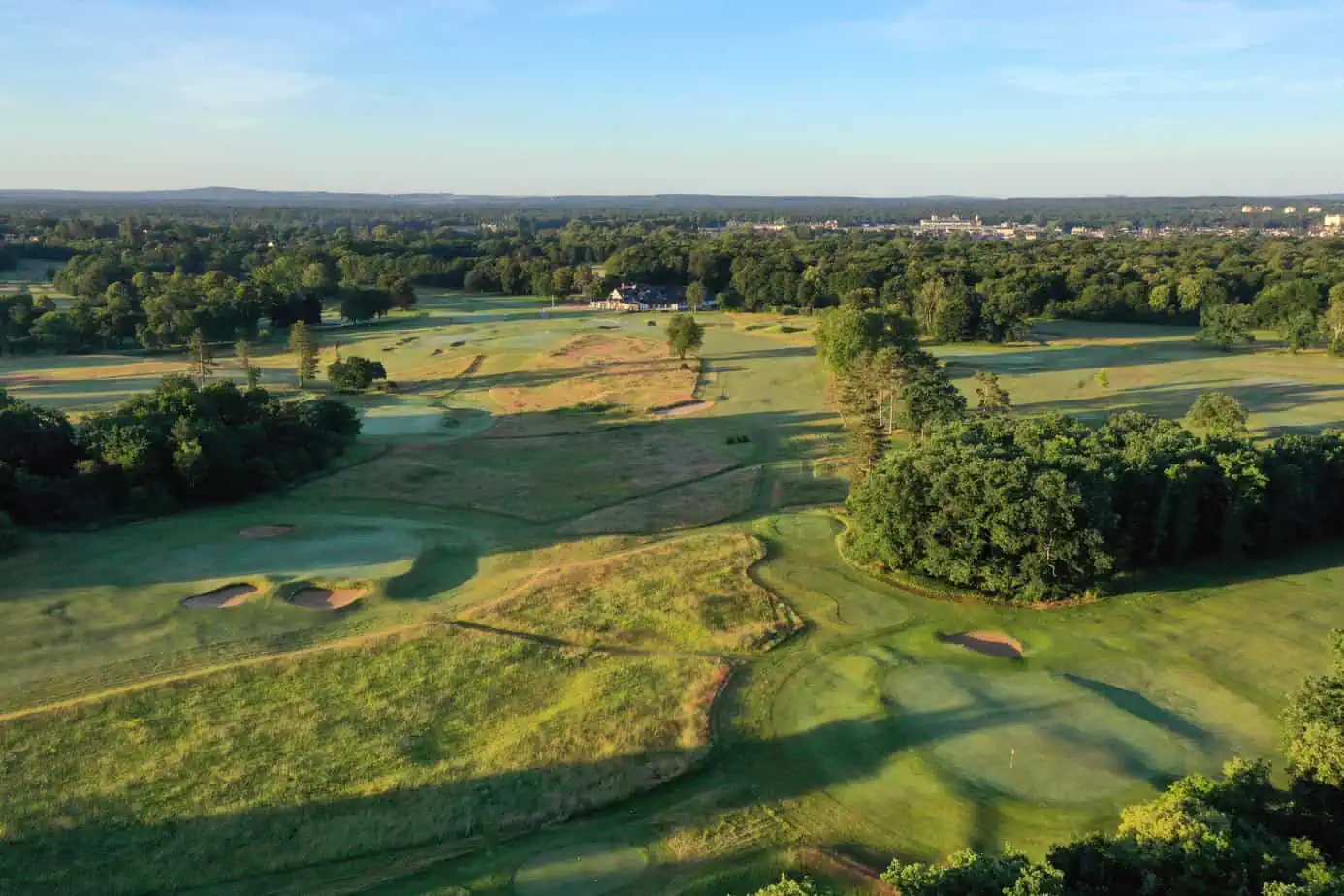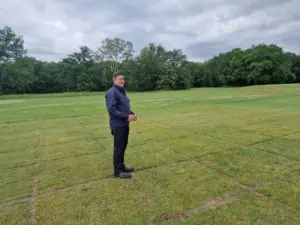We talk a lot about time on this day at Golf de Chantilly – because it takes a lot of time and a lot of patience to turn golf course management on its head from a greenkeeping perspective. This is exactly what has happened at Golf de Chantilly: ‘We have completely changed our approach to water, pesticides and fertilisers,’ says Managing Director Rémy Dorbeau, looking at the test areas for new grasses, which are located a little away from the historic clubhouse.
The French golf course, around an hour from the centre of Paris, is one of the biggest names in golf in France. Opened in 1909, the Open de France has been held here eleven times, as well as countless prestigious amateur tournaments. Names such as Bobby Jones and Nick Faldo appear on the winners’ plaques in the clubhouse. The clubhouse still retains the atmosphere of a traditional club; mobile phones are switched off, and the members know each other.
However, the environment and maintenance conditions have changed massively: ‘When I started here in 2001, there was always frost. We haven’t had that for a long time now,’ says Dorbeau. Back then, the course was maintained according to the guidelines of American golf courses: lots of water, lots of fertilisers, lots of pesticides if necessary. However, the rigid water restrictions imposed by the French authorities apply to all sports facilities whether it’s a polo club, football stadium or golf course. For Golf de Chantilly, the club can extract 55,000 cubic meters of groundwater for two 18-hole courses, a short course and the training areas. The regulations are similarly restrictive when it comes to the use of pesticides.
Transformation needs strong leadership
‘Less is more’ – or ‘the less is the better’ – this is the motto that the club management has been working to since 2001, at a time when the issues of climate change and sustainability were far less topical than they are today. ‘Strong presidents who knew a lot about golf and were all behind the same idea of new care management’ made the implementation possible together with the Executive Committee and pushed the measures through to the membership. ‘Anyone tackling a change like this needs the political environment in the club, otherwise it won’t work,’ summarizes Rémy Dorbeau.
The transformation at Golf de Chantilly involved a whole series of measures.
- Trees: ‘We must have felled 1,000 trees,’ explains Dorbeau. ‘Trees are great, but if there are too many of them fighting for too little water, you have to limit them. We now have the right trees in the right places and have focused on native trees.
- Grass: Rémy is the kind of superintendent who walks the course every day, looking at the grasses in the rough, the grasses on the fairways and greens. ‘I noticed that sheep fescue developed very well in our rough.’ He wanted to establish precisely this species on the fairways and set up trial areas. He started test plots with 40 species and cultivars in 2001 that the board inspected for four years. In 2005, the decision was made to completely overseed. ‘We can’t see your fescue,’ Rémy heard again and again from the members in the following years. Ten years later, he was able to show a fescue content of 70 to 90 per cent. The Poa grasses, which were dominant on the greens when he took up his post, have now been reduced to less than five per cent on the greens. They did not like the rigid water deprivation. Rémy is now even experimenting with Bermuda grass on his test areas. ‘I found it on a fairway. It was a small patch, now it’s a few square meters.’ It is quite possible that the fairways of the future will contain a mixture of Bermuda and fescue.
- Fertilization and plant protection: ‘The lowest level is the best level’ – at Golf de Chantilly, the idea that a good golf course has to look like a top American course from the 1990s has been completely abandoned. Thomas Meunier, Superintendent of the courses, can draw a comparison with top Australian and New Zealand facilities, where he worked for several years. ‘They always sprayed immediately, and significantly more. The difference in pesticides is enormous.’ The solution is clear to the greenkeeping team: the main diseases, especially dollar spot, must be massively reduced by selecting the right grasses and the right management.
- Irrigation: ‘Water is the key,’ says Rémy. In future, everything will revolve around this resource. On the Longères course, fairway irrigation has long since been switched off, while on the Vineuil championship course, it is very sporadic. Now that the construction of storage ponds is prohibited, water concepts are being developed with the neighbouring sports facilities. The construction of a cistern is in the pipeline. The aim is to collect 15,000 cubic meters of water per year via the roofs and runoff water from parking aeras. At Golf de Chantilly, water is a valuable resource that is treated with care. The fairways are wide from the tee, but all areas that are not necessarily part of the game are full of tall grasses. There are plenty of balls there.
- Communication: Why the rough is high, the fairways brown depending on the weather and the greens hard has been explained to members time and time again over the past 20 years. For the past two years, the club has organized a guided tour once a month for twelve people at a time. ‘If we want the members to be part of the project, we have to explain it to them.’ It’s no different with the green fee players, explains Dorbeau: ‘We do have guests who tell us that the 140 Euro green fee is too high because the course is brown. We explain our strategy to them and give them the address of green courses in the neighbourhood.’
In the end, the realization is that the future viability of the course depends on the ‘less is more’ project being carried through in the long term. It is a different golf course that Rémy Dorbeau is looking at almost 20 years after his first day of work. Vast areas of natural grass, interspersed with fairways and greens, stretch across the 160-hectare site. Various shades of green change colour, and giant trees come into view. Flat and subtly undulating, the huge greens mark the end of the courses. The courses are striking, but they do not impose themselves on the surroundings. Golf and nature come together – the result is a first-class playing experience.









